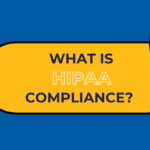
In today’s fast-paced digital world, organizations are migrating to the cloud for scalability, flexibility, and cost efficiency. One popular method is the Lift and Shift strategy, which moves applications to the cloud with minimal modifications. This blog explores the benefits, steps, and best practices for migrating workloads to Azure using this approach.
Understanding Lift and Shift Migration Strategy
Lift and Shift is a migration approach that relocates applications and data to the cloud without significant architectural changes. The primary goal is to quickly move workloads to Azure to benefit from its scalability, flexibility, and cost-efficiency, without overhauling the existing applications.
Benefits of Lift and Shift Migration
- Speed and Simplicity: Quickly migrate workloads without re-architecting applications.
- Cost Savings: Lower capital expenditure by reducing the need for on-premises hardware and maintenance costs.
- Scalability: Azure offers on-demand resources, allowing applications to scale easily with changing business needs.
- Business Continuity: With Azure’s global data centers, high availability and disaster recovery options ensure uninterrupted business operations.
- Innovation Focus: Offload infrastructure management to Azure, enabling your IT teams to focus on core innovation projects.
- Free Security Updates: Extended security updates for SQL Server and Windows Server on older versions like 2008/2008 R2 when migrating to Azure.
- Reserved Instances Savings: Save up to 72% with Azure’s reserved instances over one- or three-year terms.
- Hybrid Benefit: Use existing on-premises licenses for Windows Server and SQL Server to reduce costs by up to 40% on Azure.
Steps to Implement a Lift and Shift Migration to Azure
- Assessment and Planning:
- Inventory: Catalog all applications, servers, databases, and dependencies. Azure Migrate is recommended for discovery and assessment.
- Cost Analysis: Estimate the cost of running workloads on Azure using tools like the Azure TCO Calculator.
- Preparation:
- Environment Setup: Set up Azure subscriptions, resource groups, and networking configurations.
- Security and Compliance: Ensure that your Azure environment is secure and meets compliance needs by implementing security measures like Azure Key Vault, Microsoft Defender for Cloud, Azure Firewall, and Microsoft Entra ID.
- Migration Execution:
- Tools: Leverage tools like Azure Migrate and Azure Database Migration Service to facilitate the migration.
- Data Transfer: For large datasets, use Azure Data Box or the Azure Import/Export Service.
- Testing: Conduct rigorous testing to ensure that applications are functioning correctly in the new environment.
- Optimization and Monitoring:
- Resource Optimization: Right-size your Azure resources based on workload needs to avoid unnecessary spending.
- Monitoring: Use Azure Monitor, Azure Security Center, and other management tools to keep an eye on performance and security.
- Go-Live:
- Final Cutover: Migrate applications and data to Azure, ensuring minimal downtime.
- Validation: After migration, verify the performance and functionality of all applications and services.
Best Practices for Lift and Shift Migration to Azure
- Comprehensive Assessment: Conduct a thorough assessment to understand application dependencies, performance requirements, and any migration challenges.
- Automation: Automate repetitive processes like data transfer and configuration to reduce human errors and save time.
- Security: Implement strict security protocols, including identity management and encryption, to safeguard your applications and data.
- Continuous Monitoring and Optimization: Regularly monitor the performance of migrated workloads and optimize resource allocation to ensure cost-efficiency.
- Training and Support: Equip your IT teams with the knowledge and skills needed to manage Azure services effectively post-migration.
Conclusion
The Lift and Shift migration strategy provides a fast, efficient way to move applications to the cloud. By leveraging Azure’s robust infrastructure, businesses can quickly scale, optimize costs, and refocus IT efforts on innovation. Following a structured approach and best practices ensures that your Azure migration is seamless, cost-effective, and geared for long-term success.
Ready to optimize your cloud migration? Contact us today to learn how we can help your business successfully transition to Azure and maximize cloud performance.


